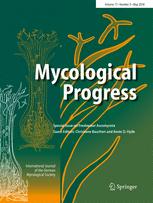Ver ítem
- xmlui.general.dspace_homeCentros Regionales y EEAsCentro Regional CórdobaEEA Marcos JuárezArtículos científicosxmlui.ArtifactBrowser.ItemViewer.trail
- Inicio
- Centros Regionales y EEAs
- Centro Regional Córdoba
- EEA Marcos Juárez
- Artículos científicos
- Ver ítem
Molecular and mycotoxin characterization of Fusarium graminearum isolates obtained from wheat at a single field in Argentina
Resumen
Fusarium graminearum is the primary causal agent of Fusarium head blight of wheat in Argentina. This disease affects yield losses and quality of grains, reducing the wheat end-use, also causing mycotoxin contamination. In this study, the genetic variability and deoxynivalenol (DON) potential/production of F. graminearum sensu stricto (s.s.) isolates obtained from wheat samples of the 2009, 2010, and 2011 growing seasons from a single location in Argentina
[ver mas...]
Fusarium graminearum is the primary causal agent of Fusarium head blight of wheat in Argentina. This disease affects yield losses and quality of grains, reducing the wheat end-use, also causing mycotoxin contamination. In this study, the genetic variability and deoxynivalenol (DON) potential/production of F. graminearum sensu stricto (s.s.) isolates obtained from wheat samples of the 2009, 2010, and 2011 growing seasons from a single location in Argentina were evaluated. The genetic variability detected using inter-simple sequence repeat (ISSR) was analyzed in relation to the in vitro deoxynivalenol production, the main monitored and quantified mycotoxin according to the current regulations for the international marketing of cereals. Of the 68 F. graminearum s.s. isolates obtained in this study, 95 % showed a different banding pattern with ISSR molecular markers and a high variability was detected within the population. However, no clustering was found in relation with year or DON production. All isolates amplify for the DON-related gene and a high variability in DON production was observed among the isolates, with production values between non-producers and 1741 μg/g. The results suggest that the F. graminearum s.s. population varies significantly in both genetic structure and toxin production in a limited sampled area.
[Cerrar]

Autor
Ortega, Leonel Maximilano;
Dinolfo, María Inés;
Astoreca, Andrea Luciana;
Alberione, Enrique Javier;
Stenglein, Sebastian Alberto;
Alconada Magliano, Teresa Maria;
Fuente
Mycological progress 15 : 1. (January 2016)
Fecha
2016-01
ISSN
1617-416X
1861-8952
1861-8952
Formato
pdf
Tipo de documento
artículo
Palabras Claves
Derechos de acceso
Restringido
 Excepto donde se diga explicitamente, este item se publica bajo la siguiente descripción: Creative Commons Attribution-NonCommercial-ShareAlike 2.5 Unported (CC BY-NC-SA 2.5)
Excepto donde se diga explicitamente, este item se publica bajo la siguiente descripción: Creative Commons Attribution-NonCommercial-ShareAlike 2.5 Unported (CC BY-NC-SA 2.5)

